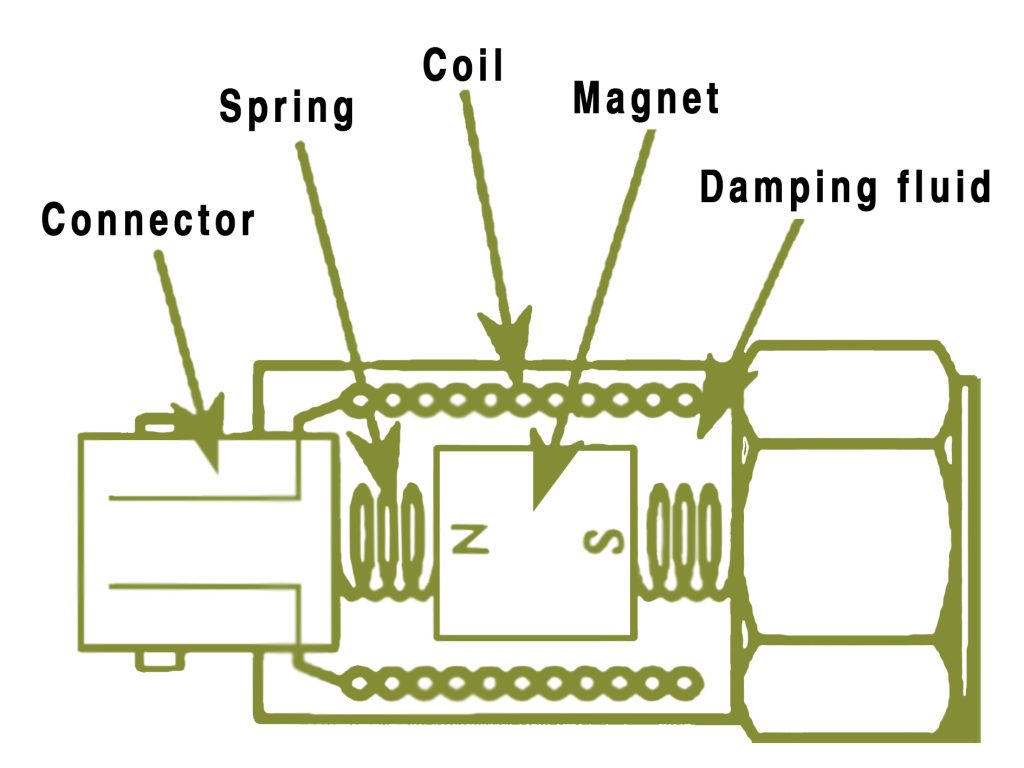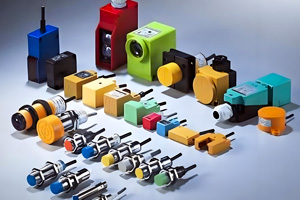Transducers: Definition, Types, Working Principle, and Applications
Author:admin Date: 2025-01-27 03:04 Views:255
Working Principle of Transducer? | Instrumentation Technician
Transducers are essential components in modern technology, playing a critical role in converting one form of energy into another. These devices are used in a wide array of applications, from everyday electronics to industrial machines and medical equipment. If you’re curious about what a transducer is, how it works, and where it is used, this article will provide a comprehensive overview.
What is a Transducer?
A transducer is a device that converts energy from one form to another. The basic principle behind a transducer is that it takes an input signal (such as temperature, pressure, light, or sound) and transforms it into another form of output (usually electrical signals) that can be easily measured, recorded, or utilized by other systems. Essentially, it serves as a bridge between the physical world and electronic devices.
Definition of a Transducer
A transducer can be defined as a device that converts energy from one form to another. It is commonly used in a variety of fields, including industrial automation, medical instrumentation, and consumer electronics. Transducers are typically classified based on the type of energy they convert, such as:
- 1. Mechanical energy to electrical energy (e.g., microphones)
- 2. Thermal energy to electrical energy (e.g., thermocouples)
- 3. Optical energy to electrical energy (e.g., photodiodes)
How Does a Transducer Work?

Transducer-working-principle-diagram
Transducers operate based on the principle of energy conversion. They take an input form of energy and convert it into another form that is more usable for analysis or further processing. The most common energy conversion processes are as follows:
- 1. Mechanical to Electrical: For example, a microphone works by converting sound (mechanical energy) into an electrical signal.
- 2. Electrical to Mechanical: An actuator converts electrical signals into mechanical motion to control a system, such as in robotic arms or motors.
Working Principle of Transducers
In most cases, transducers are built using sensors and actuators. The sensor part of the transducer detects changes in the input energy and converts it into a measurable electrical signal. The actuator, on the other hand, converts electrical energy into physical action.
For example, a pressure transducer might have a sensor that detects pressure changes and outputs an electrical signal proportional to the pressure applied. These signals are then processed by a monitoring system or controller.
Examples of Transducers in Action
- 1. Microphones: A microphone is an audio transducer that converts sound waves (mechanical energy) into electrical signals.
- 2. Speakers: A speaker does the opposite of a microphone—converting electrical signals into sound.
- 3. Thermometers: Temperature sensors convert heat energy into electrical signals, making them a key part of temperature control systems in industries like HVAC.
Components of a Transducer

Components of a Transducer
Transducers consist of various components that help in energy conversion. The construction of a transducer is tailored based on its intended application, but they typically include:
Transducer Elements
These components work in harmony to enable the sensor to function properly.
- 1. Connector: This part facilitates the electrical connection, allowing the sensor to be integrated into a larger system.
- 2. Spring: The spring helps to control the internal motion of the sensor components, providing tension or resistance.
- 3. Coil: The coil interacts with the magnet to generate electromagnetic signals, essential for converting energy into an electrical signal.
- 4. Magnet: Positioned inside the sensor, the magnet has two poles, marked as N (north) and S (south), which interact with the coil to induce electrical changes.
- 5.Damping Fluid: This fluid serves to reduce vibrations and stabilize the movement of the internal components, ensuring smoother operation.
Transducer Construction
The construction of a transducer depends on the type of energy being converted. Generally, the construction involves a sensor element (which detects changes in energy) and a signal-processing unit (which converts the sensor’s output into usable data). For example:
- 1. In a temperature transducer: A thermocouple or thermistor is used to detect temperature changes, which are then converted into electrical signals.
- 2. In pressure transducers: A piezoelectric crystal might be used to generate a signal in response to mechanical stress or pressure.
Transducer Material
The material in a transducer refer to the specific materials that enable the device to perform its function. These material include:
- 1. Piezoelectric crystals (used for vibration and sound detection)
- 2. Resistive materials (used in strain gauges for measuring deformation)
- 3. Semiconductors (used in photodetectors)
Each element is chosen based on the type of energy conversion needed and the application of the transducer.
What is a Transducer Used For?
Transducers are used in countless applications across various industries. The ability to convert energy makes them crucial in numerous fields, including:
Applications of Transducers
A transducer is used to convert one form of energy into another, making it essential in a wide range of applications. Some common uses of transducers include:
- 1. Measuring Physical Parameters: Transducers are often used to measure physical quantities such as temperature, pressure, and motion.
- 2. Sound Conversion: In audio devices, microphones and speakers act as transducers, converting sound energy into electrical signals and vice versa.
- 3. Medical Applications: Transducers are vital in medical devices like ultrasound machines, where they convert sound waves into images for diagnostic purposes.
- 4. Industrial Monitoring: In factories and power plants, transducers are used for monitoring equipment, safety systems, and controlling processes through sensors that detect temperature, pressure, or vibrations.
- 5. Consumer Electronics: Transducers are found in devices like smartphones, where they convert sound (microphone) or touch (touchscreen sensors) into electrical signals.
- 6. Energy Conversion Systems: Transducers are used in energy conversion devices like solar panels, where light energy is converted into electrical energy.
In essence, transducers enable the conversion of physical energy into a usable electrical form for further processing, control, and monitoring across various fields.
Types of Transducers
Transducers can be classified into several types based on the form of energy they convert. Below are some common types of transducers:
Pressure Transducers:
Used to measure pressure changes in systems like hydraulic systems and industrial applications.
Temperature Transducers:
Commonly used in thermocouples and RTDs to convert temperature readings into electrical signals.
Force Transducers:
Used to measure force or load in applications like weighing systems and load cells.
Transducer Circuit
A transducer circuit is an electronic setup that connects a transducer to a system for signal processing and amplification. It typically converts the output from a transducer into a usable electrical signal. Here’s a basic outline of how a transducer circuit works:
- 1. Transducer: Converts physical changes (e.g., pressure, temperature) into an electrical signal.
- 2. Signal Conditioning: Amplifies, filters, or converts the signal for further use.
- 3. Measurement/Processing: A microcontroller processes the signal for analysis or control.
- 4. Output: The signal is displayed or used to trigger actions in a system.
Common Examples of Transducer Circuits:
Piezoelectric Transducer Circuit

Piezoelectric Transducer Circuit
This is a circuit diagram using a piezoelectric transducer to generate voltage.
- 1. Piezoelectric Transducer: Converts mechanical stress into voltage.
- 2. Diodes (D1-D4): Rectify the AC voltage into DC.
- 3. Tactile Switch: Activates the circuit when pressed.
- 4. Capacitor (47uF): Stores the generated energy and smooths the voltage.
- 5. Resistor (1k): Limits current to protect components.
- 6. LED: Lights up when enough energy is stored in the capacitor.
Sum up
Transducers are fundamental components that convert energy from one form to another, allowing devices and systems to interact with the physical world. From microphones to pressure sensors and ultrasound machines, transducers are essential in a wide array of applications across industries. Understanding how transducers work, their components, and their uses can help us appreciate the technology that powers modern devices and systems. Whether you’re designing transducers, utilizing them in industrial applications, or exploring career opportunities, their role in our daily lives cannot be overstated.
Please send RFQ , we will respond immediately.
Frequently Asked Questions
1. What is the typical price of a transducer?
Prices range from $10 for simple sensors to over $1,000 for specialized transducers like ultrasonic or piezoelectric types.
2. What is the difference between active and passive transducers?
Active transducers generate signals independently, while passive ones need an external power source.
3. What affects transducer accuracy?
Material quality, environment, calibration, and interference can impact accuracy.
4. How to mount a transducer?
Mount it securely in a vibration-free, interference-free location using the manufacturer’s guidelines. Ensure proper orientation and avoid over-tightening.
5. How to calibrate a pressure transducer?
Connect to a known pressure source, set zero pressure, apply known pressures, adjust output, and verify accuracy across the range. Calibrate annually or as needed.


